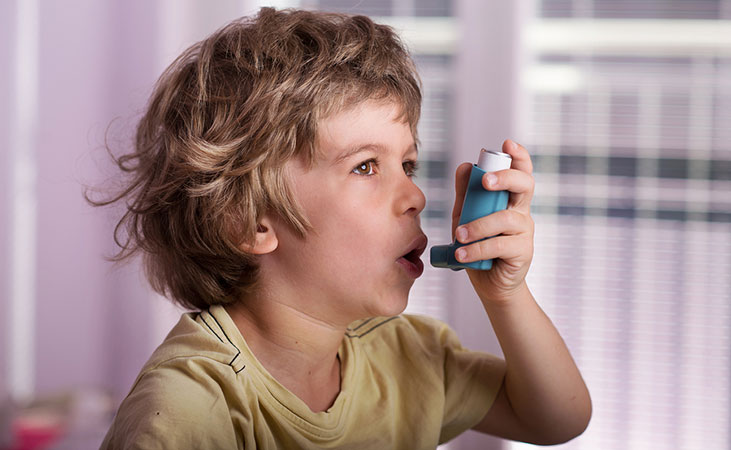Experts agree that people who regularly spend time in buildings infested with mold are at great risk to their health. Their risk of suffering from respiratory symptoms and asthma is up to 75% higher as a result.
But the mold does not always trigger the same reaction. In this article, you’ll learn four different ways mold can affect your health.
However, as information in advance, you should still know what the mold is made of and how it gets to you.
Mold reaches humans through the respiratory tract, skin or food
Mold is composed of an interweaving of cellular filaments. The fungus itself is frugal and finds good living conditions in almost all soils.
The reproduction of the mold takes place via spores, which are released into the air in large quantities. Within your premises, they find optimal growing conditions when high humidity meets cold surfaces.
You pick up mold spores mainly through inhalation. In rare cases, they can also be absorbed directly through the skin. If it is mold on food, in such a case, it can also be ingested through food.
To find out how mold can affect your health after ingesting the spores, read on.
Effect 1: Allergies occur in you!
In principle, all types of mold can cause allergies to occur. Dust containing mold spores is officially classified as allergenic. Molds that are considered particularly dangerous include “Penicillium marneffei” and “Aspergillus fumigatus”.
Not only the mold itself and its spores are responsible for allergies. The allergens that are released into the dust also play their part.
The spores spread throughout the living spaces and attach themselves to the fine dust that floats in the air. Through your breathing you pick up the spores and through the respiratory tract they enter your body.
Depending on the number of spores in your body and your physical condition, an allergic reaction will occur later. The severity of the allergy is also influenced by how quickly the particular type of fungus produces spores.
Allergy is defined as an excessive pathological defense reaction of the immune system.
Effect 2: You get sick with an infection!
The so-called “mycosis” can occur when a person inhales the spores, has direct contact with the mold on his skin or with internal organs. However, the infection occurs only in rare cases and only in immunocompromised people.
The effects of the infection can be very unpleasant for the sufferers, as fungal filaments can grow into the arteries and damage the organs.
Effect 3: The smell of mold bothers you!
Mold on the walls can cause a rotten, musty smell. This can greatly affect the quality of living and life.
Studies have shown that the odor originates from substances such as alcohols, ketones and terpenes. In addition, studies have confirmed a link between the organic compounds of the substances and health complaints.
Odor nuisance, or MVOC for short, has not been adequately researched. Nevertheless, it appears from previous findings that it causes physical impairment, such as mucosal irritation and headaches.
Effect 4: The mold toxins are poisoning you!
Certain molds can produce and emit dangerous toxins. These are metabolic products of the fungi and cell wall components.
While mold toxins are primarily absorbed through food, they can also enter your body through the respiratory tract.
Typical health effects of the toxins are noticeable fatigue and perceptual disturbances.
People whose immune system is weakened by a previous chronic illness are particularly at risk. In addition, it can also put infants and children in danger very quickly, as they have not yet developed sufficient defenses.
Conclusion: The health risk “mold” is underestimated!
According to the Federal Environment Agency (UBA), there are as yet no limit values for mold in buildings. This shows that research has yet to agree on the level at which mold is dangerous to your body. However, it is clear that it must have an impact. Many cases of illness prove this.
We recommend you react immediately if you discover mold on your walls. It’s even better if you don’t let it get moldy in the first place. This is the best way to protect yourself and those around you!
Learn how to never have to fret about the pesky mold infestation again in our article, ” Eliminate Mold Forever with These Two Steps!”.
Our panel heating does not give mold a chance and is healthy for people. If you too would like to benefit from mold-repellent and healthy radiant panel heating, click here.
Yes, I would like to benefit from the mold-repellent and healthy panel heating.
Photo: Kaliantye/Bigstock.com



 Wir sind Annette & Christian Egger. Hier im Blog erklären wir Ihnen, worauf es beim Wohlfühl-Klima ankommt. Wir behandeln hier Themen wie Energie-Sparen beim Heizen & Kühlen und zeigen Ihnen unsere interessantesten Projekte.
Wir sind Annette & Christian Egger. Hier im Blog erklären wir Ihnen, worauf es beim Wohlfühl-Klima ankommt. Wir behandeln hier Themen wie Energie-Sparen beim Heizen & Kühlen und zeigen Ihnen unsere interessantesten Projekte. 